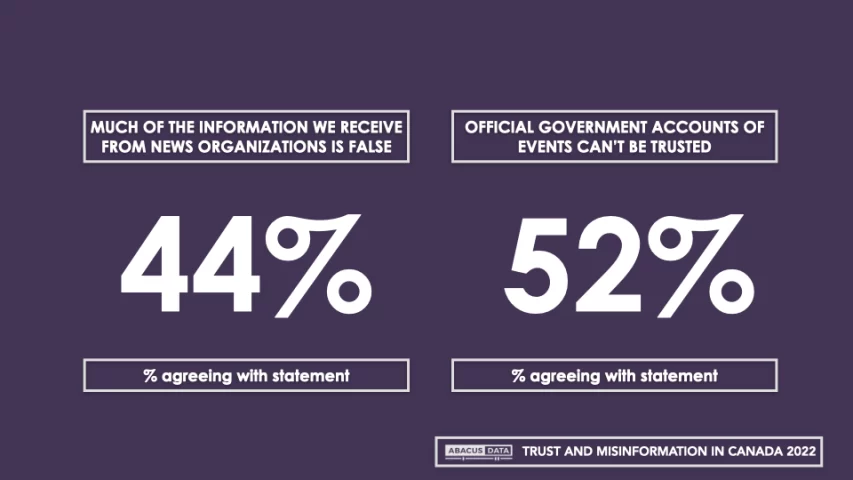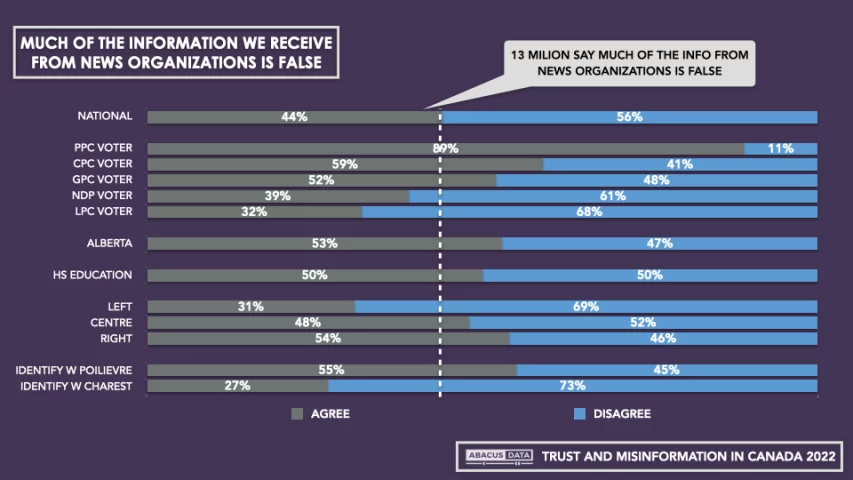World War Two
Published 17 Sep 2022
(more…)
September 18, 2022
Jailbreak! Mussolini on the Loose Again! – WW2 – 212 – September 17, 1943
“King Eeyore”
In the latest edition of the SHuSH newsletter, Kenneth Whyte recounts some of the anti-Carolean gossip from the early years of King Charles:
My library of royalist literature is thin, but I did find Tina Brown’s The Palace Papers on the shelf. Published last spring, it chronicles the recent history of the House of Windsor and while it treats the whole cast of characters — Elizabeth, Philip, Margaret, Charles, Anne, Andrew, Edward, William, Kate, Harry, Meghan — much is revealed about the new king.
Charles, writes Brown, the former Vanity Fair and New Yorker editor, was never a happy fellow. She calls him “Prince Eeyore”. He “felt bruised by his childhood and miserable school days, misunderstood by his domineering father, and deprived of an emotional connection with his mother”. Among the “brutalities” he endured in his youth: his schoolmates at Gordonstoun beat him with pillow because he snored.
Although an indifferent student, he attended Cambridge where he read anthropology and archaeology. In 1969, a year before graduating, his mother crowned him Prince of Wales. He spent his early twenties in the Royal Air Force and the Royal Navy, distinguishing himself in the latter service by lowering an anchor without noticing on his chart the presence of a telecommunications cable linking Ireland and Britain. “It was snagged,” writes Brown, “and the two divers send down to dislodge it nearly drowned.” Charles earned a “stern rebuke”.
Having done his military duty, he devoted himself to polo, windsurfing, and test-driving prospective wives. Charles’s royal status made him an obvious catch, writes Brown, who judges that his “Dumbo ears were offset by his excellent tailoring and debonair polo prowess.”
Finding a wife proved difficult, not least because of his affinity for married women. At one point he was sleeping with both Camilla Parker Bowles, wife of Andrew Parker Bowles, and Dale “Kanga” Harper, wife of his buddy, Lord Tyron. “In the mid-seventies,” says Brown, “both married women were on call for the Prince while their husbands looked the other way.”
That’s not exactly true. Both men seemed pleased to lay down their wives for their country, as the joke went at the time. Charles was godfather to Tom Parker Bowles, son of Andrew and Camilla Parker Bowles, and also to a middle child of the Tyron’s who, naturally, was named Charles.
What Camilla and Kanga had in common were game personalities and maternal instincts that accommodated the Prince’s “sentimentality and tantrums, and needs to be soothed and amused”.
It wasn’t until 1981, at the age of 32, that the Prince of Wales made his choice of a bride. It was famously awful for all concerned. He married twenty-year-old Diana Spencer who bore him an heir, William, in 1982, and a spare, Harry, in 1984. Brown reports that Charles behaved properly in the marriage until the birth of Harry who, to his disappointment, was not a girl. “Oh God,” he said, “it’s a boy … and he’s even got red hair.”
He was back with Camilla in no time. Diana ratted him out to the author Andrew Morton in 1992 and Charles unwittingly confirmed his infidelity the next year in a notorious telephone conversation with Camilla in which he said that he wanted to “live inside your trousers or something”. You know the rest.
Austria’s Take on the Uzi: Steyr MPi-69
Forgotten Weapons
Published 13 May 2022
(more…)
QotD: Late night TV’s negative impact on US national culture (aka “Clown nose on, clown nose off”)
I truly believe that Tim Pool is absolutely right about where the political poisoning of our National culture comes from.
Shows like Saturday Night Live, the Daily Show, late night television …
They take the news, spin it through a comedy filter, and present it to the masses. This presents an easily digestible, and thus easily believable, simplified and polarized view of events, that their viewers are then encouraged to apply to the news that is coming from real news sources. Anyone who objects to this is “overreacting, or doesn’t have a sense of humor” and thus is dismissed as irrelevant.
And thus the culture of lies continues, and gets ramped up as it spreads.
It’s sickening.
James Resoldier, posting to MeWe‘s “Hoyt’s Huns” group, 2022-06-16. (private group, so no public URL available)
September 17, 2022
Is it still a conspiracy theory if more than 50% of Canadians believe it?
Chris Selley posted a link to this rather eye-opening Abacus Data poll summary by Bruce Anderson and David Coletto:
We recently completed nationwide surveying among 1500 Canadians. The focus was on the levels of trust people have in institutional sources of information, and belief in conspiracy theories. This is the first in a series called “Trust & Facts: What Canadians Believe”
44% THINK MUCH OF THE INFORMATION FROM NEWS ORGANIZATIONS IS FALSE
Almost half of those interviewed found themselves agreeing with the statement “much of the information we receive from news organizations is false”.
While this means a majority of Canadians have some trust in news organizations, more than 13 million adults (extrapolating 44% to an adult population of 29.5 million) don’t.
Those with no post-secondary education, Alberta residents and those on the right show greater mistrust. But by far the biggest differences are visible when we look at party affinity. The vast majority of People’s Party supporters don’t trust news organizations and a (smaller) majority – 59% – of Conservative voters feel the same way.
Among those who think Pierre Poilievre is the Conservative leadership candidate who best reflects their views, 55% don’t trust media information, while among those who identify with Jean Charest the proportion is much lower, at 27%.
52% THINK OFFICIAL GOVERNMENT ACCOUNTS OF EVENTS CAN’T BE TRUSTED
More than half of those interviewed found themselves agreeing with the statement “official government accounts of events can’t be trusted”
As with trust in news organizations, those with no post-secondary education, Alberta residents and those on the right showed markedly higher levels of mistrust in government.
Majorities of People’s Party, Conservative and Green Party voters indicate mistrust. Those on the left and Liberal voters show higher levels of trust.
A royal assault on free speech | The spiked podcast
spiked
Published 16 Sep 2022Tom, Fraser and Ella discuss the clampdown on republican protesters. Plus: the Ukrainian counteroffensive and the madness of Mermaids.
(more…)
In the wake of the Russo-Ukrainian war, Europe’s cold winter looms ahead
Andrew Sullivan allows his views on the fighting in Ukraine to be a bit more optimistic after Ukrainian gains in the most recent counter-attacks on Russian-held territory around Kharkiv:

Approximate front-line positions just before the Ukrainian counter-attack east of Kharkiv in early September 2022. The MOD appears to have stopped posting these daily map updates sometime in the last month or so (this is the most recent as of Friday afternoon).
As we were going to press last week — I still don’t know a better web-era phrase for that process — Ukraine mounted its long-awaited initiative to break the military stalemate that had set in after Russia’s initial defeat in attempting a full-scale invasion. The Kharkiv advance was far more successful than anyone seems to have expected, including the Ukrainians. You’ve seen the maps of regained territory, but the psychological impact is surely more profound. Russian morale is in the toilet — and if it seems a bit premature to say that Ukraine will soon “win” the war, it’s harder and harder to see how Russia doesn’t lose it. By any measure, this is a wonderful development — made possible by Ukrainian courage and Western arms.
Does this change my gloomy assessment of Putin’s economic war on Europe, which will gain momentum as the winter drags on? Yes and no. Yes, it will help shore up nervous European governments who can now point to Ukraine’s success to justify the coming energy-driven recession. No, it will not make that recession any less intense or destabilizing. It may make it worse, as Putin lashes out.
More to the point, the Kharkiv euphoria will not last forever. September is not next February. Russia still has plenty of ammunition to throw Ukraine’s way (even if it has to scrounge some from North Korea); it is still occupying close to a fifth of the country; still enjoying record oil revenues; has yet to fully mobilize for a war; and still has China and much of the developing world in (very tepid) acquiescence. Putin is very much at bay. But he is not finished.
Europe’s scramble to prevent mass suffering this winter is made up of beefing up reserves (now 84 percent full, ahead of schedule), energy rationing, government pledges to cut gas and electricity use, nationalization of gas companies, and billions in aid to consumers and industry, with some of the money recouped by windfall taxes on energy suppliers. The record recently is cause for optimism:
The Swedish energy company Vattenfall AB said industrial demand for gas in France, the U.K., the Netherlands, Belgium and Italy is down about 15% annually.
But the use of gas by households is trivial in the summer in Europe compared with the winter — and subsidizing the cost doesn’t help conservation. Russia will now cut off all gas — which could send an economy like Italy’s to contract more than 5 percent in one year. There really is no way out of imminent, deep economic distress across the continent. Even countries with minimal dependence on Russia, like Britain, are locked into an energy market with soaring costs.
That will, in turn, strengthen some of the populist-right parties — see Italy and Sweden. The good news is that the new right in Sweden backs NATO, and Italy’s post-liberal darling, Georgia Meloni, who once stanned Putin, “now calls [him] an anti-Western aggressor and said she would ‘totally’ continue to send offensive arms to Ukraine”. The growing evidence of the Russian army’s war crimes — another mass grave was just discovered in Izyum — makes appeasement ever more morally repellent.
So what will Putin do now? That is the question. His military is incapable of recapturing lost territory anytime soon; he is desperate for allies; and mobilizing the entire country carries huge political risks. It’s striking to me that in a new piece, Aleksandr Dugin, the Russian right’s guru, is both apoplectic about the war’s direction and yet still rules out mass conscription:
Mobilization is inevitable. War affects everyone and everything, but mobilization does not mean forcibly sending conscripts to the front, this can be avoided, for example, by forming a fully-fledged volunteer movement, with the necessary benefits and state support. We must focus on veterans and special support for the Novorossian warriors.
This is weak sauce — especially given Dugin’s view that the West is bent on “a war of annihilation against us — the third world war”. It’s that scenario that could lead to a real and potentially catastrophic escalation — which may be why the German Chancellor remains leery of sending more tanks to Ukraine. The danger is a desperate Putin doing something, well, desperate.
I have no particular insight into intra-Russian arguments over mobilization, but there seems to be zero point (other than for propaganda … and that cuts both ways) to instituting a “Great Patriotic War”-style mass conscription drive at this point. The Russian army could absolutely be boosted to vast numbers through conscription. Vast numbers of untrained, unwilling young people with little military training and no particular passion to save the Rodina this time, despite constant regime callbacks to desperate struggle against Hitler in 1941-45. Pushing under- or untrained troops into battle against a Ukrainian army equipped with relatively modern western weaponry would be little more than deliberate slaughter and I can’t believe even Putin would be that reckless.
Maple Fury: Canada’s Mechanized Infantry Explained
Battle Order
Published 12 Nov 2020
(more…)
QotD: Parenting
Parenting is learning how to balance the desire to cheer your kids for raging against The Machine with accepting the fact that you are now, in fact, said Machine.
“It’s amazing that you’re strong enough to escape the crib I confine you to. Your burgeoning independence is a marvel to behold. Keep fighting the dying of the light at bedtime, darling.”
“I hate you!”
“Of course you do, precious. Hatred of the people who are keeping you alive is a necessary part of individuation. However, you lack the executive function to properly weigh the consequences of going to that all-night kegger in the field.”Jen Gerson (@jengerson), Twitter, 2022-06-14.
September 16, 2022
How “misgendering” shattered the Green Party of Canada
Canada’s Green Party has never been noted for their tight party cohesion, so my use of the word “shattered” in the headline is a bit over-the-top, I must confess. Jonathan Kay provides a quick outline of the party’s history through the leadership of Elizabeth May, Annamie Paul, and most recently, interim leader Amita Kuttner:
Many grumbled that May was too slow to give up her leadership perch. Yet when she finally did step aside in 2019, the party learned that she’d been the only thing holding the outfit together. By the time the 2021 federal election rolled around, the Greens’ leader was a black Jewish woman named Annamie Paul, who got absolutely trounced in her own riding, winning fewer than 4,000 votes. Paul was then quickly run out of the party leadership during a complicated (and often farcical) internecine battle that involved public accusations of bigotry hurled in all directions, and which (predictably) repelled many of the party’s financial supporters.
On Sept. 27 I began the process of stepping down as Green Party of Canada Leader. Today I sent formal notice of my resignation to the GPC. I will also be ending my membership in the GPC.
It was an honour to work for the people of Canada and I look forward to serving in new ways.— Annamie Paul (@AnnamiePaul) November 10, 2021
One might think things couldn’t get any worse for the Greens. But, thanks to the installation of a 30-year-old interim leader named Amita Kuttner, they very much did.
Kuttner self-describes as non-binary, transgender, and pansexual. When asked, “What are your preferred pronouns?” in a 2019 interview, the one-time astrophysicist replied, “they/them”, but then elaborated as follows:
When I write my pronouns, I sometimes write all of them: they/them, she/her, he/him, because I don’t care. There will be days where I’m not always even aware of what my gender is, and I will notice it based on how someone addresses me and whether I respond. I was in choir for many years, and they’d say, “women sing now”, “men sing now”. And I would find myself starting with one or the other group, even though I was obviously supposed to sing soprano. I’d be like, “Oh, I guess I’m feeling that today.”
And yet, despite the fact Kuttner apparently can’t always figure out “what my gender is”, and claims not to “care” in any case, the interim leader felt the need to issue a lengthy statement on September 6th detailing the allegedly devastating emotional effects that ensued when the pronoun descriptor “she/elle” appeared in the electronic caption that sat alongside Kuttner’s name during a Green Party of Canada Zoom call, instead of the Kuttner-approved “they/he/ille”. Indeed, Kuttner described the ordeal as evidence that the Greens were infected by a “system of oppression”:
What happened here impacted me much more than a slip of the tongue. It made me feel hurt and isolated at a moment that should have been filled with inspiration and anticipation … This incident is reflective of a larger pattern of behaviours that a few in the party are perpetuating. Over the years, the party has documented reports which indicate a systemic issue disproportionately affecting Black, Indigenous, and racialized people and 2SLGBTQIA+ people, and I hope many more stories will be able to be shared so that this incident can be a catalyst for change … When things like this happen, people need to see those in leadership positions take some accountability, acknowledge how they have added to this system of oppression and what they must do to break the cycle.
Kuttner’s attempt to weaponize this (apparently very oppressive) instance of miscaptioning forms part of an ongoing civil war that’s been playing out for weeks within the Green leadership. That battle goes to the question of whether the party should proceed with its ongoing party leadership race, or pause it so that Green functionaries can investigate all of the (vaguely expressed) accusations of antisemitism, racism, and transphobia that were flung in every direction during the tumultuous last days of the Annamie Paul era back in 2021.
The Byzantine Empire: Part 3 – The Age of Justinian – Cashing in the Gains of the Fifth Century
seangabb
Published 7 Dec 2022Between 330 AD and 1453, Constantinople (modern Istanbul) was the capital of the Roman Empire, otherwise known as the Later Roman Empire, the Eastern Roman Empire, the Mediaeval Roman Empire, or the Byzantine Empire. For most of this time, it was the largest and richest city in Christendom. The territories of which it was the central capital enjoyed better protections of life, liberty and property, and a higher standard of living, than any other Christian territory, and usually compared favourably with the neighbouring and rival Islamic empires.
The purpose of this course is to give an overview of Byzantine history, from the refoundation of the City by Constantine the Great to its final capture by the Turks.
Here is a series of lectures given by Sean Gabb in late 2021, in which he discusses and tries to explain the history of Byzantium. For reasons of politeness and data protection, all student contributions have been removed.
(more…)
The rise of the “golden penis”
Look folks, there are some headlines that just write themselves, but it’s not my coining — here’s Janice Fiamengo to explain where that … memorable term … came from:
We’ve been told for years that the future is female, that everyone benefits from female leadership and everything improves when women take charge.
Any man on a college campus who has ever objected to the plethora of special university programs and women-only scholarships and pro-woman propaganda was told he had a problem with gender equality.
But now it turns out that some women themselves are not entirely happy with the deal feminists engineered for them, which sees them outnumbering men at close to 3-2 at most English-speaking universities, and thousands of words have already been devoted to the idea that college women deserve a more satisfactory dating experience.
According to Monica Greep in an article from last fall for the Daily Mail, “How Golden Penis Syndrome is ruining dating for university women”, the “deficit of male students” at college “means men develop inflated egos and become Casanovas who cheat — despite a lack of social and sexual skills”.
The formulation reminds me of an old Woody Allen joke from his movie Annie Hall. In my updated version, two women are discussing college dating: “The guys are awful, egotistical schmucks who think they’re really great,” says one. “I know,” says the other, “And there are so few of them!”
If these men are so lacking in “social and sexual skills”, as the article tut tuts, then why are the women upset that there are not more of them? If the women don’t want guys who are Casanovas, they don’t have to date them. But admitting that women have any role in creating the hookup culture being decried is impossible for most commentators today; the fault must always be found in the men. There is even a “relationship therapist” quoted in the article who tells us that Golden Penis Syndrome “speaks of the delusional belief that you are unusually and uniquely gifted as a man”.
Really? Did any of these analysts interview any young men who actually said that about themselves, or is this a case of women projecting onto men their own self-delusions, angry because the men have failed to respond to them as they, the women, would prefer?
As has become typical of pronouncements about men and women, the article blames men for being in the minority at college: at some institutions, they make up only 25% of the student body (see Mark Perry’s charts, for example here, showing the decades-long gender asymmetries; and see his proof that women outnumber men in STEM fields too). The shortage apparently causes men “to see themselves as a prize to be won by female suitors”.
What articles such as this one won’t admit is that these guys are “prizes to be won”, and increasingly so in light of the reported imbalance.
It is well known that college-educated men who marry are, on average, likely to work the longest hours, seek promotion most aggressively, and become high earners focused on supporting their wives and families (even post-divorce, as too often happens). A woman who is fortunate enough to marry a man like this stands to secure a materially better life, often at her husband’s expense of health and leisure, than she would have had if she had depended solely on her own earning power and work ethic (women are famously more interested in “work-life balance” than men are). Now with these men in the minority, women are having to compete for the men’s attention, and we’re supposed to feel sorry for them.
Of course the alleged problem has an obvious solution: the women could date and marry non-university-educated men. Why won’t they? The article mentions this somewhat embarrassing reality in gender-neutral terms by noting that “At the same time [that] university sex ratios have been skewing female, there’s been a simultaneous increase in what academics call ‘assortative mating’.” The article explains, “That’s a fancy way of saying that college grads only want to date and marry other grads.”
Wrong.
It’s not male college grads who won’t marry anyone other than a female college grad. As a 2019 study confirmed, it is almost exclusively women who insist on the need for their mates to earn more. In a sane age genuinely committed to “gender equality”, we might criticize women for their stereotypical behavior, for perceiving men as “success objects”. But we never criticize women for acting out of self-interest.
Only men are criticized for that, as well as for uncouth dating behaviors that everyone knows women also engage in when circumstances favor them: playing the field, cheating, “ghosting”, and so on. Being picky, demanding, and often downright rude are all recognized as a woman’s prerogative because women ARE seen as inherently valuable.
Look at Life — East of Suez (1966)
PauliosVids
Published 20 Nov 2018More than 50,000 British soldiers, sailors and airmen police the rivers and jungles of Borneo.
QotD: Counting coup
… the moment we get into how courage (and showing courage) was understood in these cultures, both the idea of a universal battle experience and also a universal notion of “warrior courage” break down. To take just a few examples …
Among Great Plains Native Americans, the sign of great courage was the individual act (on this, see A.R. McGinnis, Counting Coup and Cutting Horses (2010), which is replete with examples), particularly touching an enemy combatant (“counting coup“) or stealing enemy horses from their camp, typically by night and by stealth. It is sometimes asserted that counting coup means touching an enemy without killing them, but McGinnis fairly handily debunks this – not only could the enemy be killed, he could be already dead, killed by someone else and in some cases up to four warriors might count coup on the same fallen foe, none of whom need be the person who did the killing (McGinnis, 44, 63). These acts were fundamentally individual and the honor that resulted from them was entirely from the daring, rather than, necessarily, their direct efficacy. As McGinnis notes at multiple points, it was not the killing of an enemy, but the actual act of rushing forward to touch the body that was rewarded with honor.
Of course in many cases, counting coup in this way was followed by swift retreat, since the body in question was likely to be amongst the still living and dangerous enemy, which was the point since the purpose of the act was to show supreme daring and skill to rush forward among the enemy and get back out after touching one. The same of course was true of “cutting horses”, a task which could generally only be done by sneaking into an enemy camp, literally surrounded by (hopefully unaware) enemy warriors, before grabbing their horses and riding off (there is a first person account of such a raid in Black Elk Speaks (1932) which has always stuck with me, but McGinnis provides several other examples).
(I should note that the last Great Plains Native American to achieve the complete set of military honors and be made a war chief was Joe Medicine Crow who quite famously managed to lead a war party, take an enemy’s weapon, count coup (on a live opponent!) and steal some fifty horses from the Nazi SS during the Second World War)
Bret Devereaux, “Collections: The Universal Warrior, Part IIa: The Many Faces of Battle”, A Collection of Unmitigated Pedantry, 2021-02-05.
September 15, 2022
The promise of grand “green” plans versus the reality when the plans are implemented
Elizabeth Nickson on the contrast between how things like the “Green New Deal” are represented by their proponents and the media and what their actual real-world outcomes are like:

“Forest fire” by Ervins Strauhmanis is licensed under CC BY 2.0 .
Ever wonder what happens to a region once it is “preserved”? Right now, all through the US and Canada, governments are taking giant bites of land, and locking them down under the guidance of the UN’s Agenda 2030, which means a full 30% of the land and waters will be “saved”. If anyone notices, the local media preens and praises itself. Aren’t we all so wonderful and enlightened and caring, the PR says, and the newspapers copy it line-for-line.
No, it’s terrible. It is possibly the very worst thing ever. Set-aside land degrades. There aren’t enough bureaucrats in the world to take care of it. Besides out in the forest or up on the ranges is decidedly not where a civil servant wants to be. As a result none of them know what they have done. It’s a loop, politicians, stupid women and beta males, civil servants engaged in a masturbatory celebration of their goodness and triumph over commerce. From hipster neighborhoods all over North America a song of self-praise rises like smoke into the air.
Except now, right now, I sit in a smoke haze courtesy of the set aside forests in Washington State which are burning. Look, this is simple to think through. In the early 90’s Clinton ratified the spotted owl preservation plan and hundreds of millions of acres of forest were left to themselves, no cutting, no grazing, no firewood collection, no thinning, no fire breaks, no removal of dead trees, especially not beetle-killed trees. In fact, no touch.
What happens when a formerly industrial forest is left to itself? A thousand tiny trees start to grow right up against each other. They grow like carrots that haven’t been thinned. They grow so thick they can’t get light. They draw all the water from the ground, they end up like tinder. Around them brush grows — it too cannot get light or much water so it too is desiccated. It grows up the trees, trying to get at the water in the trees, and acts as a fire ladder
Boom.
Massive canopy fires, which, since they decommissioned the roads into the forest, are very very difficult to either brake or put out.
On every single environmental metric, in every single system, these people destroy the land. What they do is exactly the opposite of what they claim. They take massive amounts of tax money to “save” land and then they destroy the resource. And the towns in the resource area. And the families, and the tax base.
I could go through every environmental goal, and tear it apart. None of them use science that is provable. It can’t be duplicated, its assumptions are wrong, its statistics fiddled. Tens of thousands of papers are used to create these policies, written by the environment movement through its NGOs, funded by rich morons from old families, most of whose ancestors created environmental devastation themselves. I can refute the math and assumptions of EVERY SINGLE ONE OF THEM given a maximum of four hours and one phone call. No one challenges these studies, and these abominations then become law. Law that destroys the water and land.








